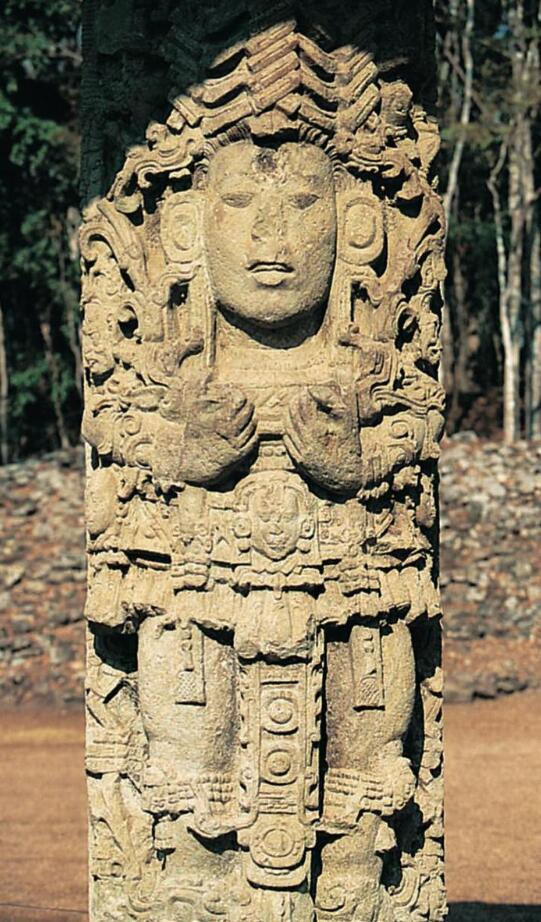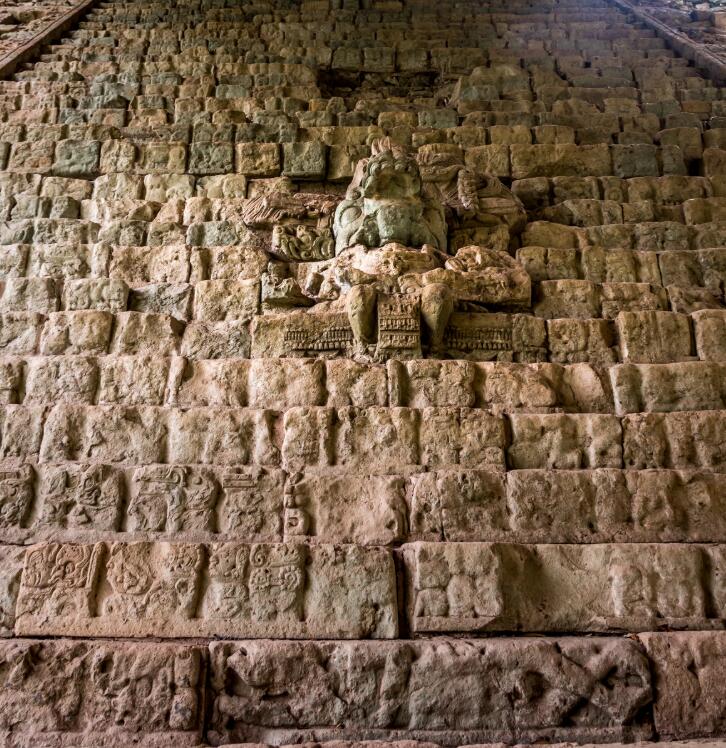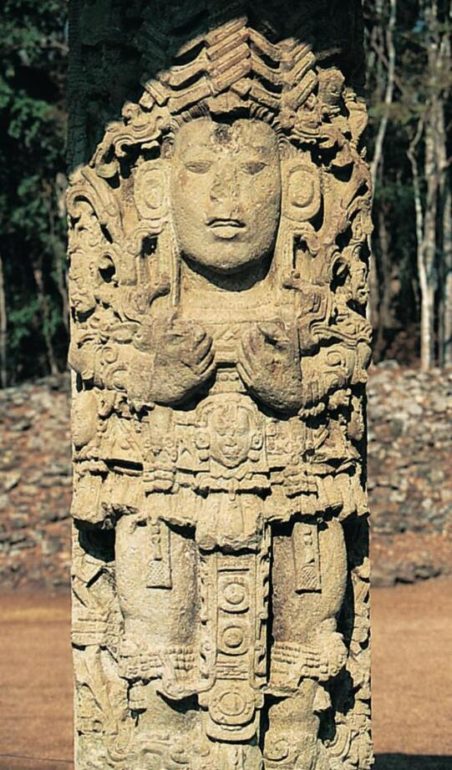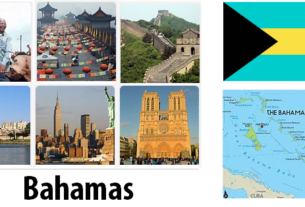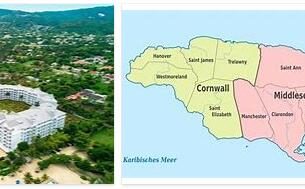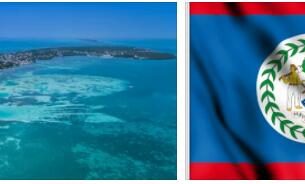Honduras, Republic of Central America. The country borders El Salvador in the southwest, Guatemala in the west and Nicaragua in the south and southeast, and has coastlines both to the Pacific in the south and the Caribbean in the north. The mountainous Honduras are considered Central America’s second poorest country. The capital is Tegucigalpa.
Honduras (the name) is Spanish and means ‘depths’. It was given by Spanish explorers because of the good anchorages.
Geography and environment
Apart from the coastal plains and around the large estuaries, Honduras is a difficult mountain range. More than half of the area is higher than 900 meters above sea level. A few peaks reach higher than 2000 meters; the highest point is Cerro las Minas, 2849 meters above sea level.
The mountains are heavily divided and surround small high valleys and pools. A north-south lowering from the Ulúa Delta in the north to Golfo de Fonseca in the south divides the mountains into two masses. The west is a continuation of the Guatemalan highlands while the east is linked to the mountains of Nicaragua.
In contrast to neighboring countries, Honduras is not particularly prone to volcanic eruptions and heavy earthquakes, while light earthquakes often occur. Along the Caribbean Sea there is a fertile coastal plain and in the northeast large coastal lagoons. The coastline towards the Caribbean is approx. 600 kilometers long and towards the Pacific approx. 75 kilometers long.
The climate is tropical and characterized by the northeast passage, which provides large amounts of rainfall. The climate is warm and humid on the coastal plains and more moderate in altitude. There are small temperature differences throughout the year. In coastal areas, temperatures are approx. 26–28 ° C in summer and approx. 22-24 ° C in winter. Valley regions in the mountainous areas have temperatures of 19–23 ° C. Annual rainfall is 2000–2500 millimeters; there is most precipitation in September – November. Central parts of the highlands have drought from November to April.
45.3 per cent of the area is forest covered. There are species-rich tropical rainforests in the northernmost areas and mangrove forests in the northeastern part of the country. In the hillsides oak and coniferous trees grow. By the way, woodlands and Caribbean pine trees are cultivated in the countryside. There is steppe vegetation in the highlands.
There are a large number of species of mammals, including brølape, armadillos, anteaters, peccary and tapir. Cats include puma and jaguars. There are more than 700 species of birds, including hummingbirds, toucans and parrots. There are crocodiles and caimans in the rivers, and there are many species of turtles, lizards and snakes. In lagoons and coastal waters there are a large number of species of fish and molluscs. It is a rich insect life, including many species of beetles and butterflies.
“The Hieroglyphic Stairway” in Temple 26 of Copan, located in western Honduras. This is the longest Mayan inscription found.
People and society
Fertilizers make up 90 percent of the population, while 7 percent belong to the U.S. indigenous population, 2 percent are black, and 1 percent are white. 54.7 percent of the population is urban. (The World Factbook 2016). The settlement is densest in the highlands and along parts of the north coast.
Life expectancy at birth is 72.74 years for women and 69.34 years for men (2016). About a quarter of the population is under 30 years of age.
97 percent of the population are Roman Catholics, while Protestants make up 3 percent.
The official language is Spanish ; Native American languages are also spoken.
State and politics
Honduras is a unified state, democratic republic. The supreme authority is held by the president, who is also the prime minister. The president is elected in the general election for four years and cannot be re-elected. The President exercises military authority through a commander-in-chief elected for four years by the National Assembly, the National Congress. The government is appointed by the president. The National Congress has 128 members elected by universal suffrage for four years. The policy is characterized by instability with frequent interference from the military.
The country is divided into 18 ministries. The governors are appointed by the president. The ministries are further divided into municipalities.
Honduras has volunteer military service. The defense consists of army, navy and air force, and there is also a paramilitary security force. US troops are stationed with about 500 men at Soto Cano Air Base.
Honduras is a member of the UN and most of the UN’s special organizations, the World Trade Organization, the Central American Common Market (CACM) and the Organization of American States (OAS).
History
Several well-preserved Mayavians of the first centuries of our era are found in Honduras, including Copán near the border with today’s Guatemala. The eastern part of Honduras was populated by hunter and gatherer tribes. The Mayan kingdom in the western part of Honduras went down before Kristoffer Columbus came to the coast in 1502. The area was colonized by the Spaniards from 1524, but the natives made great resistance and were overcome only in 1537 when Lenca chief Lempira was killed and 30,000 warriors. surrendered.
The westernmost part of Honduras belonged to the Mayan culture. The image shows a Mayan sculpture of one of the rulers (the 13th) from the famous ruins of Copán.
Silver mining was started in the area around Tegucigalpa from the end of the 16th century, which led to economic progress. From 1570 Honduras was part of the General Captainate of Guatemala. Central America’s first university was founded in Comayagua in 1632. As late as the late 1570s, the British occupied large parts of the Mosquito Coast in the north.
The colony disintegrated and became independent in 1821 and formed two years later the Central American Federation. Honduras declared absolute independence as a republic in 1838. The country was characterized by instability and there were 85 presidents between 1821 and 1876. One of the main reasons why no strong state power arose was that the landlord class was weak and that corruption was widespread. In addition, Honduras failed to develop a solid coffee economy like in Guatemala and El Salvador.
Foreign companies became dominant in Honduras and the American company United Fruit Company established around 1900 large plantations in the country. This company’s interests soon dominated both the economy and politics, and the country became a good pattern for the term “banana republic”. On several occasions between 1911 and 1924, the United States intervened militarily. In both world wars, Honduras joined the United States.
In the 20th century, relations with neighboring countries Guatemala and Nicaragua were tense. In 1969, the so-called “Football War” was triggered by a fight between Honduras and El Salvador. This was the relationship of Salvadoran foreign workers in Honduras; Salvadoran forces entered Honduras to defend their countrymen. In 1978, Honduras experienced military coup # 138. The last of many military junta surrendered power to civilian rule after an election in 1981. Honduras became the base of operations for Nicaraguan counter-revolutionaries ( contras ) and US military maneuvers were part of the secret war against Nicaragua. In 1987, the country’s government pledged that counter-revolutionary activities against Nicaragua would no longer take place from Honduran territory.
In 1998, Honduras was hit by Hurricane Mitch. About 5600 people lost their lives and 70 percent of the crops were destroyed. The material destruction was extensive. Two years later, the grain crops failed due to drought, and a UN program was put in place to prevent the country from being hit by a famine disaster. Natural disasters set off developments in Honduras for an estimated 20 years.
In the last half of the 1990s, North American and Asian companies established themselves in the San Pedro Sula area, lured by cheap labor and tax exemptions. This led to a build-up in the industrial sector. Economic growth in Honduras was strong in the early 2000s, but the country is still one of the least developed in Central America and about two-thirds of its population lives below the poverty line. In 2008, due to the financial crisis, the country plunged into economic depression, but in recent years the economy has prospered. In June 2009, President Manuel Zelaya was deposed by a military coup and sent into exile in Costa Rica.
Economy and business
Honduras is a distinct agricultural country and agriculture accounts for 13.9 percent of GDP (2015) and 39.2 percent of employment (2005). Important agricultural products for export include bananas, coffee, coconuts and sugar cane. Some timber is also exported.
In the domestic market especially maize, citrus fruits, yucca, rice, millet, tobacco and cotton are grown. Lead, iron, zinc, gold and silver are extracted as well as some petroleum on the coast. Fishing is especially conducted on lobster and shrimp for export.
The industry accounts for 26.4 per cent of GDP (2015) and consists of food, textiles, tobacco products, chemical products and car parts. The United States is its main trading partner.
Service-providing industries account for 59.7 per cent of GDP. Areas of focus include ecotourism and archaeological tourism.
Knowledge and culture
There are six years of compulsory and free elementary school, three-year secondary school and two-three year high school. Lack of schools prevents many children from attending school. Hurricane Mitch destroyed more than 3,000 schools in 1998. Honduras has 11 universities.
There are seven daily newspapers, about 200 radio stations, including the state Radio Nacional de Honduras, and six private television companies. Programs are sent in Spanish and English.
José Cecilio del Valle (1780-1834) wrote patriotic poems and José Trinidad Reyes (1797-1855) wrote folk comedies. Arturo Mejia Nieto (1900-1972) wrote avant-garde literature after the First World War. Well-known lyricists from the same period include Clementina Suárez (1902-1991) and Jacobo Cárcamo (1916-1959). Lyricists from the post-World War II period include Pompeyo del Valle (1929-) and Óscar Acosta (1933-2014). Marcos Carías Reyes (1905-49) and Ramón Amaya Amador (1916-66) are well-known novelists. Significant recent authors include César Lazo (1954-) and Mercy Lozano Dacarett (1958-).
A prominent painter in the 18th century was José Miguel Gómez (1712-1806) who is known for a variety of paintings in cathedrals and portrait paintings. Pablo Zelaya Sierra (1896-1933) was influenced by Cubism and Arturo López Rodezno (1906-1975) was the country’s first fresco and was inspired by Mayan art. José Antonio Velásquez (1903-1983) created naïve paintings with motifs from rural life.
The American indigenous music was influenced by African and Spanish music from the 16th century. Military music has played an important role since the 1870s and quadrille, polka, waltz and masurka influenced popular music in the 1900s. Punta, salsa, merengue, reggae and reggaeton are important modern music genres. Folk music is played with marimba, guitar and other instruments.
Football is the most popular sport in Honduras.
